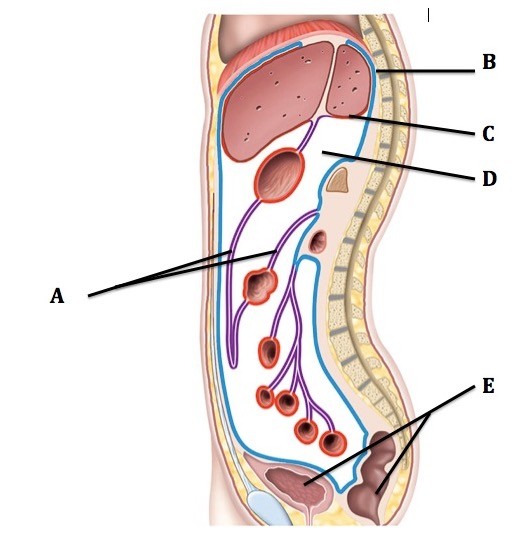Ascending and descending tracts of the spinal cord occur in the
A) columns.
B) gray commissure.
C) horns.
D) roots.
Ans: A) columns.
You might also like to view...
The sympathetic postganglionic axons from the superior cervical ganglion innervate
a: Sweat glands in the head b: Sweat glands in the palms c: Smooth muscle of blood vessels in the head d: Smooth muscles of blood vessels in the antebrachial region e: Superior tarsal muscle of the eye f: Submandibular salivary gland A. a, c, e B. b, d, f C. a, c, f D. d, e, f E. b, d
 This is a sagittal section through the abdominopelvic cavity. What structure does "A" represent?
This is a sagittal section through the abdominopelvic cavity. What structure does "A" represent?
A. Parietal peritoneum (lines cavity) B. Visceral peritoneum (covers organs) C. Peritoneal cavity D. Retroperitoneal organs E. Mesentery
What is the quickest physiological mechanism for achieving moderate heat loss?
A. Cutaneous vasodilation B. Convection C. Cutaneous vasoconstriction D. Diaphoresis E. Nonshivering thermogenesis
Which type of leukocyte is polymorphonuclear?
A. Lymphocytes B. Basophils C. Eosinophils D. Neutrophils